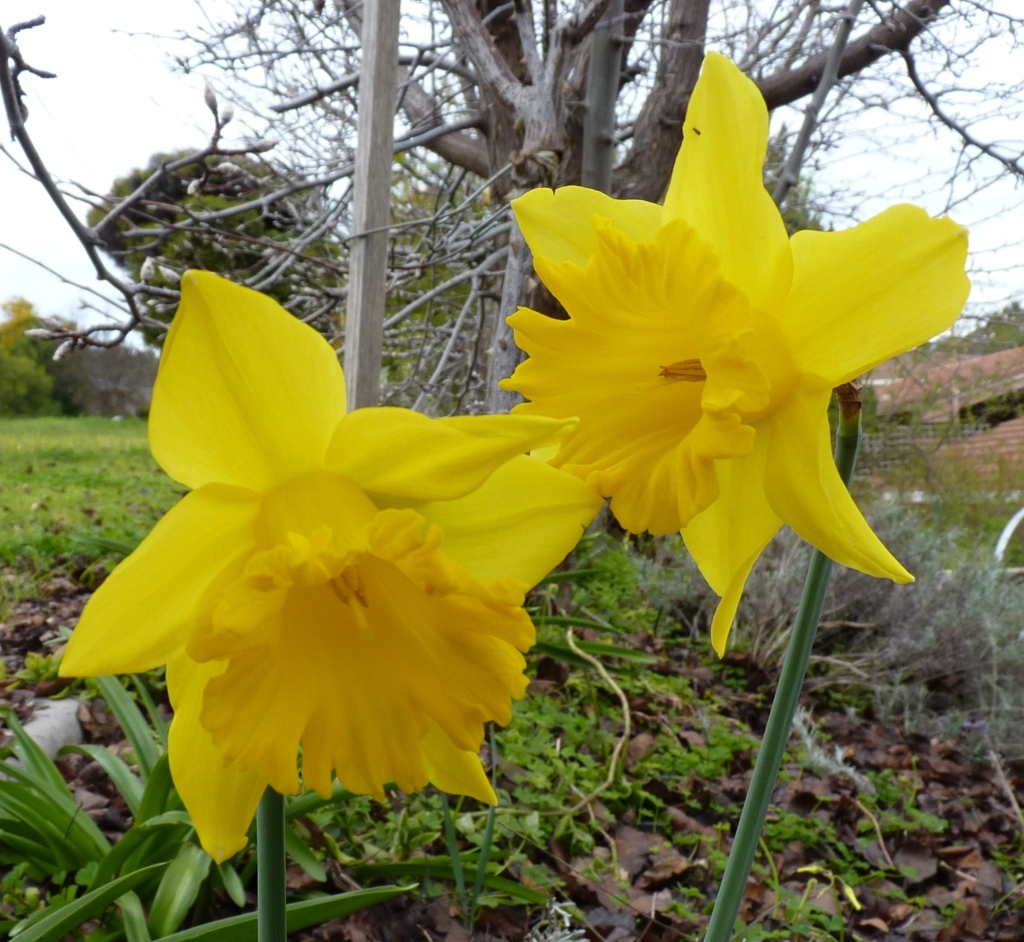Narcissus pseudonarcissus
L. DaffodilBulb ovoid, 20–50 mm diam. Leaves several, erect, linear, flat, 10–50 cm long, 5–15 mm wide. Scape erect, 20–50 cm high, biconvex. Flower solitary, white to deep golden yellow; pedicel bent at near right-angle above level of attachment of spathe; perianth tube broadly obconical, 1.5–2.5 cm long; lobes ovate, 2–4 cm long, widely spreading; corona trumpet-shaped, 2–4 cm long, usually more strongly coloured than remainder of perianth, the rim recurved and usually crenate-undulate; stamens included within corona. Capsule 1–2.5 cm long. Daffodil. Flowers spring.
VVP, VRiv, GipP, OtP, Gold, CVU, GGr, HSF, HNF, Strz, VAlp. Also naturalised in WA, SA, NSW, Tas. Indigenous in western Europe, but widely cultivated in temperate areas around the world. Recorded as naturalised around Zumsteins in the northern Grampians, but persisting around old homesteads and settlements in many areas. Many cultivars (and hybrids with other Narcissus species) are grown. One notable, widely grown cultivar, is 'Telemoneus Plenus', a form with a double corona. It has apparently become naturalised in SA.
Conran, J.G. (1994). Liliaceae. In: Walsh, N.G.; Entwisle, T.J., Flora of Victoria Vol. 2, Ferns and Allied Plants, Conifers and Monocotyledons, pp. 637–686. Inkata Press, Melbourne.
 Spinning
Spinning




